Insights into the Musa genome: syntenic relationships to rice and between Musa species
- PMID: 18234080
- PMCID: PMC2270835
- DOI: 10.1186/1471-2164-9-58
Insights into the Musa genome: syntenic relationships to rice and between Musa species
Abstract
Background: Musa species (Zingiberaceae, Zingiberales) including bananas and plantains are collectively the fourth most important crop in developing countries. Knowledge concerning Musa genome structure and the origin of distinct cultivars has greatly increased over the last few years. Until now, however, no large-scale analyses of Musa genomic sequence have been conducted. This study compares genomic sequence in two Musa species with orthologous regions in the rice genome.
Results: We produced 1.4 Mb of Musa sequence from 13 BAC clones, annotated and analyzed them along with 4 previously sequenced BACs. The 443 predicted genes revealed that Zingiberales genes share GC content and distribution characteristics with eudicot and Poaceae genomes. Comparison with rice revealed microsynteny regions that have persisted since the divergence of the Commelinid orders Poales and Zingiberales at least 117 Mya. The previously hypothesized large-scale duplication event in the common ancestor of major cereal lineages within the Poaceae was verified. The divergence time distributions for Musa-Zingiber (Zingiberaceae, Zingiberales) orthologs and paralogs provide strong evidence for a large-scale duplication event in the Musa lineage after its divergence from the Zingiberaceae approximately 61 Mya. Comparisons of genomic regions from M. acuminata and M. balbisiana revealed highly conserved genome structure, and indicated that these genomes diverged circa 4.6 Mya.
Conclusion: These results point to the utility of comparative analyses between distantly-related monocot species such as rice and Musa for improving our understanding of monocot genome evolution. Sequencing the genome of M. acuminata would provide a strong foundation for comparative genomics in the monocots. In addition a genome sequence would aid genomic and genetic analyses of cultivated Musa polyploid genotypes in research aimed at localizing and cloning genes controlling important agronomic traits for breeding purposes.
Figures
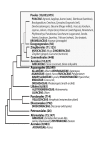


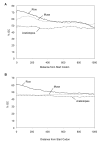
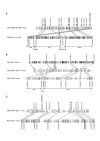
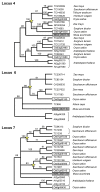
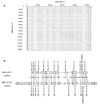

References
-
- Arias P, Dankers C, Liu P, Pilkauskas P. The world banana economy 1985–2002. FAO. 2003. http://www.fao.org/documents/show_cdr.asp?url_file=/docrep/007/y5102e/y5...
-
- Janssen T, Bremer K. The age of major monocot groups inferred from 800 + rbcL sequences. Botanical Journal of the Linnean Society. 2004;146:385–398. doi: 10.1111/j.1095-8339.2004.00345.x. - DOI
-
- Sanderson MJ, Thorne JL, Wikström N, Bremer K. Molecular evidence on plant divergence times. American Journal of Botany. 2004;91 - PubMed
-
- Simmonds N, Shepherd K. The taxonomy and origins of the cultivated bananas. Bot J Linn Soc. 1955;55:302–312.
-
- Bartos J, Alkhimova O, Dolezelova M, De Langhe E, Dolezel J. Nuclear genome size and genomic distribution of ribosomal DNA in Musa and Ensete (Musaceae): taxonomic implications. Cytogenet Genome Res. 2005;109:50–57. - PubMed
Publication types
MeSH terms
Substances
LinkOut - more resources
Full Text Sources
Miscellaneous

